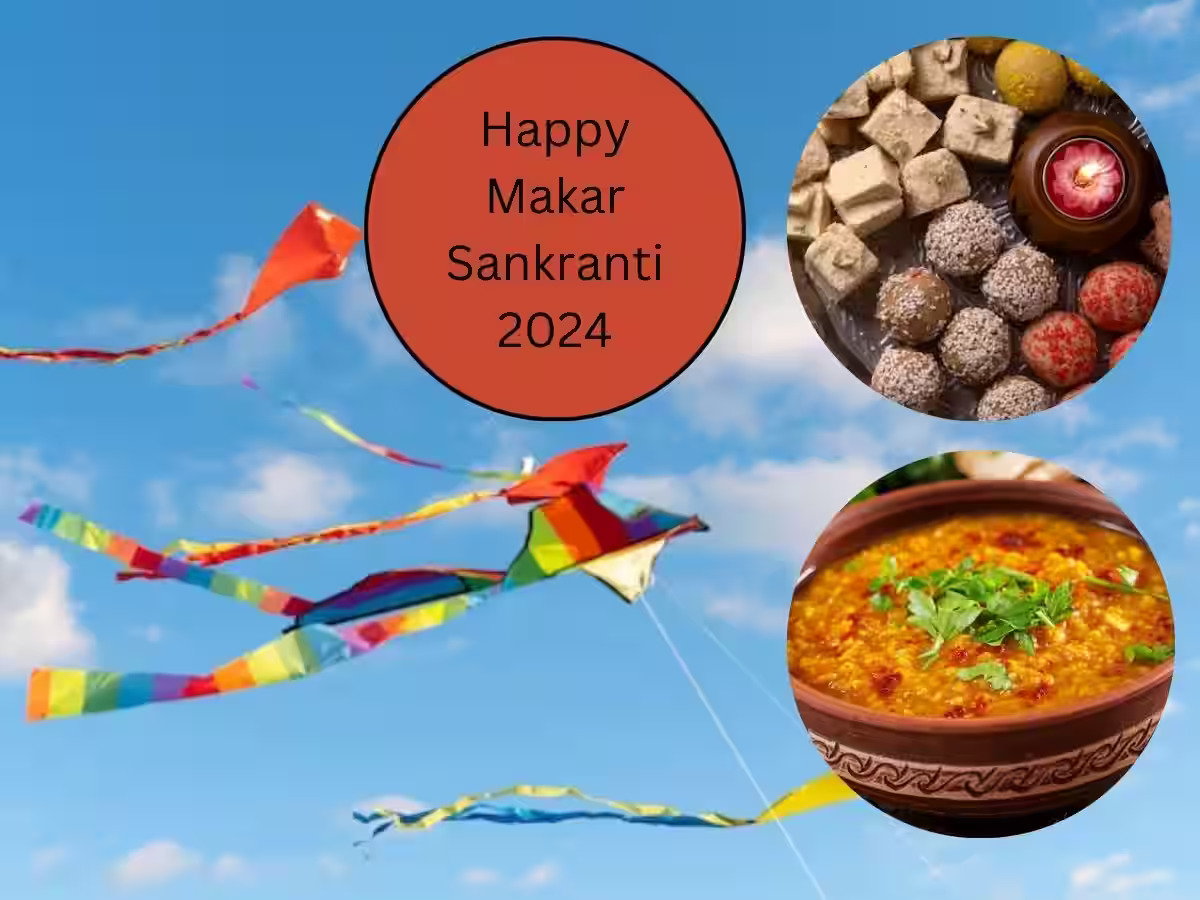
Makar Sankranti: A Celestial Odyssey
Introduction: Makar Sankranti, a revered festival in various parts of India, marks the sun’s transition into the zodiac sign of Capricorn. Celebrated around January 14th, this festive occasion is rich in cultural and spiritual significance, fostering unity and joy. Let’s explore the essence of Makar Sankranti and the dynamic traditions associated with this sun-centric celebration.
Unpacking the Significance: Makar Sankranti is fundamentally a solar festival, symbolizing the sun’s shift northward and the culmination of the winter solstice. “Makar” denotes the zodiac sign Capricorn, while “Sankranti” signifies the sun’s movement between zodiac signs. This celestial event heralds longer days, warmer temperatures, and a sense of renewal, embracing the prospects of fresh beginnings and agricultural abundance.
Diverse Cultural Celebrations: Celebrations vary across India, with regional nuances in customs. A widely enjoyed tradition during Makar Sankranti is kite flying, representing the triumph of light over darkness. The colorful kites dotting the sky serve as a visual metaphor for the victory of good over evil and the rejuvenation of the spirit.
Delectable traditional sweets, often made from sesame, jaggery, and other ingredients, are a culinary highlight of the festival. Tilgul, a sweet made from sesame and jaggery, holds particular significance, symbolizing the exchange of kind words and fostering harmony among people.
Religious Observances: Makar Sankranti is a day of religious significance. Devotees take ceremonial dips in rivers, especially the Ganges, to purify themselves. The day is marked by special prayers and rituals dedicated to the sun god, expressing gratitude for the life-sustaining energy bestowed by the sun.
Connecting with Capricorn: The alignment of Makar Sankranti with the zodiac sign Capricorn adds an astrological layer to the festivities. Capricorn, an earth sign ruled by Saturn, is associated with discipline, hard work, and perseverance. As the sun enters Capricorn, it is believed to amplify these qualities, inspiring individuals to set goals, work diligently, and pursue success.
In Conclusion: Makar Sankranti, with its amalgamation of cultural, spiritual, and astrological elements, weaves a vibrant tapestry that binds people to nature and each other. As the sun’s rays warm the earth, Makar Sankranti becomes a celebration of life, growth, and the perpetual cycle of rejuvenation. Embrace the vivacity of this festival and revel in the joy it brings to communities across the nation.
Embarking upon the sacred canvas of various Indian terrains, Makar Sankranti stands as an esteemed festival, symbolizing the solar journey into the dominion of Capricorn. Commencing its festivities around the 14th day of January, this cultural and spiritually charged event becomes a nexus of unity and joy, transcending mere celebratory endeavors. Let us delve into the essence of Makar Sankranti and the kaleidoscopic traditions that intertwine with this solstitial jubilation.
Unveiling the Cosmic Allegory: Makar Sankranti fundamentally embraces the solar paradigm, portraying the sun’s migratory trajectory towards the northern hemisphere and the zenith of the winter solstice. “Makar,” the lexical embodiment of the zodiacal Capricorn, intertwines with “Sankranti,” signifying the solar transit between astrological domains. This celestial juncture ushers in protracted daylight, ascending temperatures, and a regenerative ambiance, embracing the inception of novel chapters and agricultural opulence.
Multifaceted Cultural Revelry: The celebration of Makar Sankranti manifests with multifarious expressions across the Indian subcontinent, adorned with regional idiosyncrasies in traditions. A widespread custom during this festive period involves the ascension of kites, emblematic of the conquest of luminosity over obscurity. The chromatic ensemble of kites embellishing the firmament functions as a visual metaphor, embodying the triumph of virtue over malevolence and the reinvigoration of the human spirit.
The gustatory facet of Makar Sankranti unveils delectable traditional confections, often concocted from sesame, jaggery, and assorted ingredients. Of particular note is Tilgul, a saccharine creation synthesized from sesame and jaggery, holding profound significance as it symbolizes the exchange of benevolent expressions and the cultivation of concord among individuals.
Sacerdotal Observances: Makar Sankranti extends beyond secular jubilation, embracing a day of religious solemnity. Devotees partake in ceremonial ablutions within rivers, most notably the sacred Ganges, seeking purification. This day is earmarked by specialized invocations and rituals dedicated to the solar deity, a reverential gesture expressing gratitude for the life-sustaining vigour bestowed by the radiant sun.
Communing with Capricornian Essence: The alignment of Makar Sankranti with the zodiacal enclave of Capricorn introduces an astrological stratum to the revelries. Capricorn, an earthbound archetype governed by Saturn, associates itself with principles of discipline, assiduity, and tenacity. As the sun permeates the realm of Capricorn, an augmentation of these virtues is postulated, inspiring individuals to delineate aspirations, toil assiduously, and ardently pursue triumphant endeavors.
In Summation: Makar Sankranti, an intricately woven fabric of cultural, spiritual, and astrological threads, constructs a vivid tableau, binding humanity to the natural cosmos and to each other. As the sun’s effulgence caresses the terrestrial sphere, Makar Sankranti metamorphoses into a jubilation of life, burgeon, and the ceaseless rhythm of revitalization. Immerse yourself in the exuberance of this festivity, partake in the communal elation it imparts across the expanse of our nation.



pasha bhai